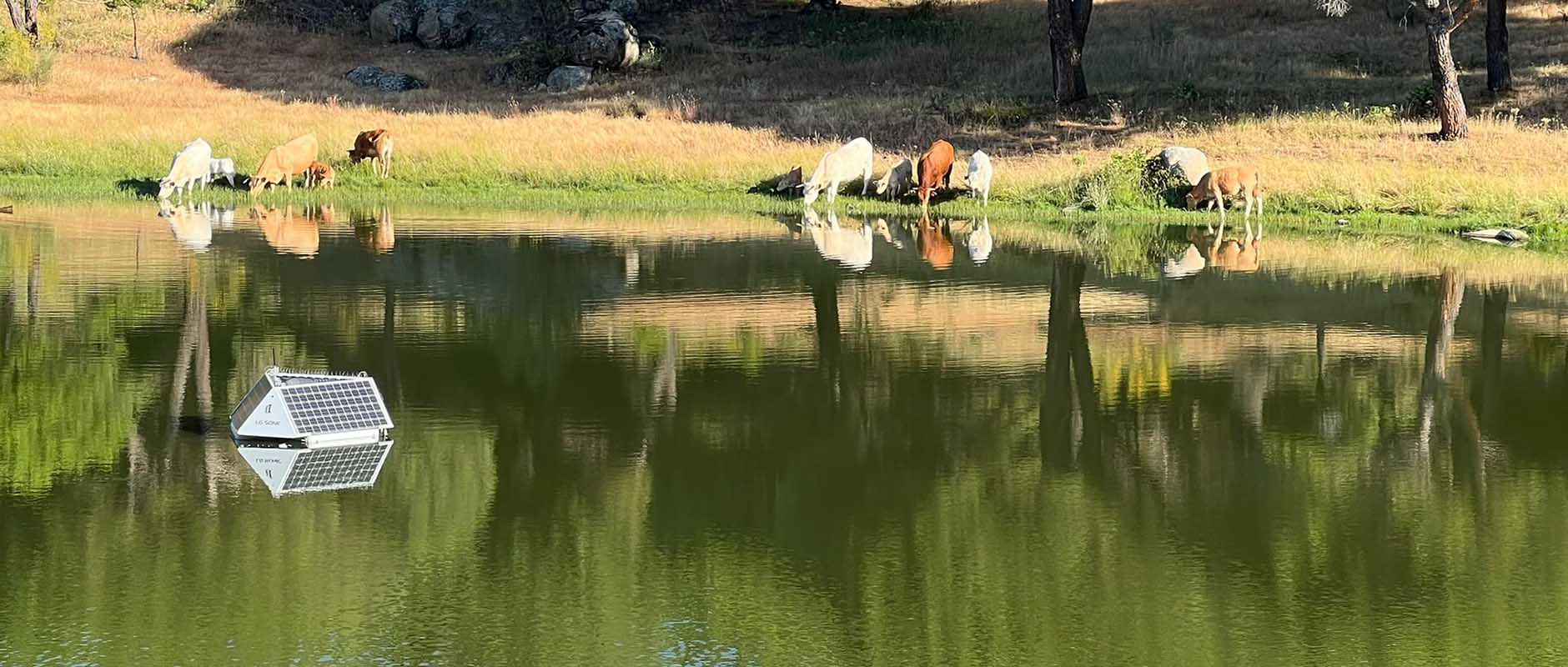
The El Hoyo de Pinares city council has installed an LG Sonic MPC-Buoy. This move is designed to improve the water quality of their Becedas I drinking water reservoir. Due to long-lasting algal bloom problems, the ministry of the presidency offered a subsidy to improve the situation. Here, the goal was to implement an algae management system and replace the micro-filtration membranes at Becedas I. The planned interventions, beyond merely improving water quality, will increase the population’s water supply.
In testing, excessive reservoir algae growth, alarmingly, triggered taste and odor problems. Ultimately, many different algae groups can produce tastes and odors, including Cyanobacteria (blue-green algae). The most common compounds are MIB (2-Methylisoborneol) and Geosmin. These compounds are naturally occurring and give water an earthy or musty taste and odor. This usually occurs during the summer months, when high temperatures create favorable conditions for algal blooms. Since this reservoir is El Hoyo de Pinares’ primary source of drinking water, improvements to the town’s drinking water treatment process were critical.
In search of a solution to stop algal blooms, the city council of El Hoyo de Pinares contacted the technology company KIOAI, which defined the best solution through a detailed study with the municipal engineer and opted for the LG Sonic MPC buoy. The MPC-Buoy’s eco-friendly ultrasound technology was installed on the 8th of August in the Becedas I reservoir by LG Sonic’s installation team. Before the end of the day, the buoy was operational and had started transmitting algae and water quality data to LG Sonic’s water quality software MPC-View. This, in turn, allowed algae treatment to start immediately.
Algal blooms have recently become a major problem across the country. Accelerated by climate change, algal blooms are harming drinking water sources, coupled with the fishing and tourism industry. Warmer temperatures make it challenging for water to mix, promoting faster and thicker algae growth. Small organisms may move through warmer water more easily. Meanwhile, algae can float to the surface more quickly. To this end, algal blooms absorb sunlight, further warming the water and encouraging other blooms.